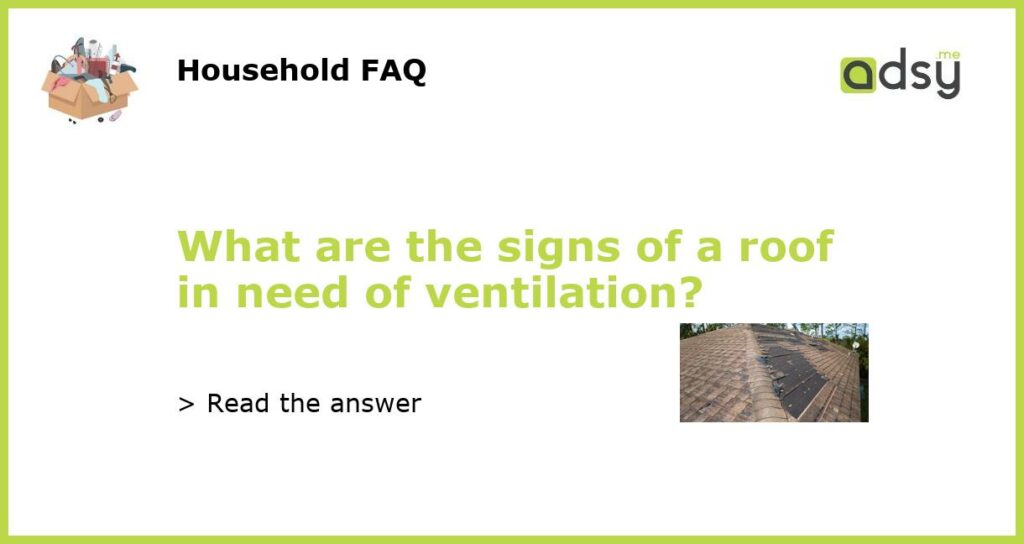Signs of a Roof in Need of Ventilation
A properly ventilated roof is essential for maintaining the health and integrity of your home. It helps regulate temperature, reduces moisture buildup, prevents mold growth, and extends the life of your roof. However, if your roof lacks proper ventilation, it can lead to a range of issues that can be costly to repair. Here are some signs to look out for that indicate your roof is in need of ventilation.
High Indoor Temperatures
If you notice that the temperature inside your home is significantly higher than the outside temperature, it could be a sign that your roof lacks proper ventilation. Without adequate airflow, hot air gets trapped in the attic, causing the temperature to rise. This can make your home uncomfortable and increase the need for air conditioning, resulting in higher energy bills. Installing proper roof ventilation can help regulate the temperature and create a more comfortable living environment.
Moisture and Condensation
Excessive moisture and condensation in your attic are clear indications that your roof needs better ventilation. Poor airflow allows moisture to build up, leading to the growth of mold, mildew, and other damaging organisms. Over time, this can cause wood rot, structural damage, and compromise the overall integrity of your roof. Adequate ventilation helps to control moisture levels by allowing for proper air circulation and reducing the risk of condensation.
Shingle Damage and Premature Aging
If you notice that your shingles are curling, cracking, or blistering, it could be a sign of poor roof ventilation. Without proper airflow, the heat buildup can cause your shingles to deteriorate more quickly than normal. This can result in premature aging of your roof, leading to the need for costly repairs or premature replacement. Investing in proper ventilation can help extend the lifespan of your shingles and protect your roof from unnecessary damage.
Ice Dams in Winter
In colder climates, ice dams can form on roofs that lack proper ventilation. Ice dams occur when heat trapped in the attic melts the snow on the roof, which then refreezes at the edges. This ice buildup can damage the roof’s structure and cause water to seep into your home, leading to water damage and potential mold growth. Installing proper ventilation can help prevent the formation of ice dams by regulating the temperature and ensuring uniform melting of snow on the roof.
Increased Energy Costs
If you’ve noticed a significant increase in your energy bills, it could be due to poor roof ventilation. Without proper airflow, your HVAC system has to work harder to maintain a comfortable temperature in your home. This excess strain on your HVAC system leads to higher energy consumption and increased utility costs. By improving ventilation, you can help reduce the load on your HVAC system, lower your energy bills, and improve overall energy efficiency.
In conclusion, recognizing the signs of poor roof ventilation is crucial for maintaining the health and function of your roof. High indoor temperatures, moisture buildup, shingle damage, ice dams, and increased energy costs are all indicators that your roof is in need of ventilation. Investing in proper roof ventilation can help regulate temperature, control moisture, extend the lifespan of your roof, and save you money in the long run.

